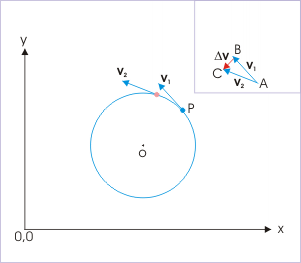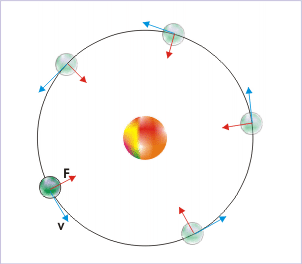| << Chapter < Page | Chapter >> Page > |
Uniform circular motion

The yet another important aspect of the UCM is that the centripetal force is radial and hence does not constitute a torque as the force is passing through the axis of rotation. A torque is force multiplied by the perpendicular distance of the line of action of the force from the axis of rotation. It must be clearly understood that the requirement of centripetal force is essentially additional or different to the force, which is required in non-uniform circular motion to accelerate the particle tangentially. The centripetal force is required to accelerate particle in radial direction and is different to one required to accelerate particle tangentially.
Irrespective of whether circular motion is uniform (constant speed) or non-uniform (varying speed), the circular motion inherently associates a radial acceleration to ensure that the direction of motion is continuously changed – at all instants. We shall learn about the magnitude of radial acceleration soon, but let us be emphatic to differentiate radial acceleration (accounting change in direction that arises from radial force) with tangential acceleration (accounting change in the speed that arises from tangential force or equivalently a torque).
Motion of natural bodies and sub-atomic particles are always under certain force system. Absence of force in the observable neighborhood is rare. Thus, uniform linear motion is rare, while uniform circular motion abounds in nature as there is availability of external force that continuously changes direction of the motion of the bodies or particles. Consider the electrostatic force between nucleus and an electron in an atom. The force keeps changing direction as electron moves. So is the case of gravitational force (indicated by red arrow in the figure), which keeps changing its direction as the planet moves around sun.
Approximated circular motion of earth around sun

It may sometimes be perceived that a force like centripetal force should have caused the particle or body to move towards center ultimately. The important point to understand here is that a force determines initial direction of motion only when the particle is stationary. However, if the particle is already in motion, then force modifies the direction in accordance with initial inclination between velocity and force such that the resulting acceleration (change in vector velocity) is in the direction of force. We shall soon see that this is exactly the case in uniform circular motion.
Let us summarize the discussion of uniform circular motion so far :

Notification Switch
Would you like to follow the 'Physics for k-12' conversation and receive update notifications?